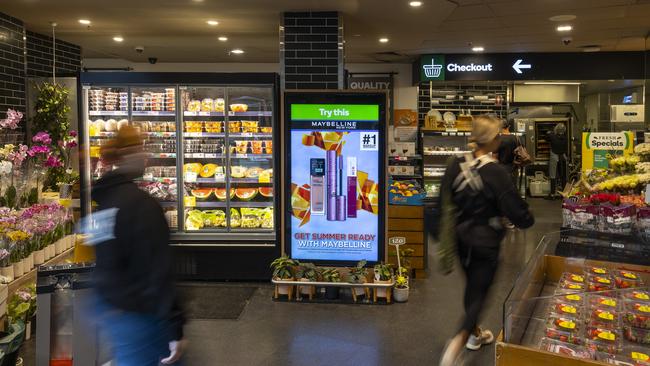Search marketing faces disruption from social media, retail media networks and AI, report finds
The rise of social media search, retail media and AI ushers in a “third era” of search marketing, a new report shows.

A new report from the World Advertising Research Centre (WARC) Media shows that search marketing faces “unprecedented disruption” from a trio of channels including social media, artificial intelligence (AI) and so-called retail media networks.
The report shows that while Google retains its dominance in search, and is forecast to earn US$176.4bn in advertising revenue in 2023, its share of total search, which includes retail media, is set to drop from 51.0 per cent in 2021 to 50.4 per cent in 2023.
The WARC study also surveyed global advertisers whose plans to increase ad investment with Google this year is down to 53 per cent from 59 per cent the previous year.
Retail media networks are rising as a potential new profit centre for brands and retailers in the US, such as Amazon and Walmart, while the retail media landscape in Australia growing, currently dominated by supermarket chains Woolworth’s Cartology and Coles 360. PwC also estimates $1.2 billion in new revenue will enter the Australian retail media advertising market over the next five years.
The growing influence of retail media has been well-documented. What is now emerging as part of the search marketing conversation is the rise of social search and generative AI, including the recent integration of OpenAI’s ChatGPT’s into Microsoft’s search engine, Bing.
The rise of social search, according to Maggie Dong, head of school and a professor at the University of NSW’s School of Marketing, could mean clearer customer segmentation for, but it both challenges and opportunities come with the platform.
“For the upside, marketers can spend less time and efforts in identifying the target segments; customers may cluster in a meaningful way by joining in different groups or following distinct ‘key opinion leaders’ on social media platforms. Customer preferences are more identifiable now, which could save the marketing budget by marketing only to the targeted customer groups,” Ms Dong said.
She also thinks this could tilt the power balance towards influencers on social channels as a result.
“For the downside, key opinion leaders and influencers over the social media platforms are powerful now. Marketers need to spend budgets in cooperating with them to approach and influence the target consumers.”
As for retail media, Gregory Grudzinski, head of content at WARC Digital Commerce told The Growth Agenda that it’s likely the organic growth of the nascent market will follow a similar path in Australia as it has in the US.
“Once one major retailer launches a retail media, it will attract a disproportionate share of ad dollars from brands looking to explore the opportunity and take advantage of the first party shopper data the retailer makes available,” Mr Grudzinski said.
“This will prompt competitive retailers to develop RM offerings, which will encourage the formation of third party players that can assist retailers in setting up ad networks.
“With retail media margins as great as 60 per cent, retailers will likely quickly decide they cannot afford to ignore the retail media trend.”
He said that brands are taking advantage of retail media to drive sales in the short term, and the dollars used to fund investments in retail media are coming from a variety of sources, including brand marketing.
“However, savvy brands recognise the need to invest for the long term as well. We’re seeing players like Amazon.com and other leading marketplaces offer brands full-funnel opportunities – all the way from driving brand awareness through to driving conversion and incentivising a purchase.” Mr Grudzinski said.
A report from IAB Australia released in March found that 31 per cent of investment in retail media ad spend is coming from new marketing budgets, however 69 per cent is being re-allocated from existing budgets to the channel.
That same report also found that retail media is being planned as part of the “holistic media mix” (65 per cent) and in consideration and/or combination with above-the-line campaigns (53 per cent).
Ms Dong said that there is a risk the rising social search marketing could decrease “brand power” as a result: “The traditional product brands will need to figure out their own ways to balance their budgets in leveraging the power of social search and in connecting with the end customers directly.”
WARC’s Mr Grudzinski said that creative strength will continue to play a key role in driving purchasing decisions in retail media environments.
“Creativity is enormously important. Gaining visibility is an on-going challenge for brands online and off. For many consumers, especially in the FMCG space, shopping is a replenishment function. A shopper runs out of dog food. They add their preferred brand of dog food to their shopping list, and then they buy that brand. It’s very unlikely they make a new brand decision with every subsequent purchase.”
“Therefore, how does a competing dog food brand get a consumer’s attention long enough to explain that there is might be a better choice? Marketers have a great number of tools to help them do this, but at the core of each step is a core creative idea that links to consumer need state. This in turn ignites the process of awareness – interest – desire – action.”
As brands eye social media search, global creative firm We Are Social chief executive Suzie Shaw, added that creative strength is similarly important as social search matures.
“Creativity is critical for brands to connect with audiences via social search. Both in terms of the content and the ‘meta-data’. With the vast amount of content available on social media, brands need to focus on creating compelling and engaging content that stands out and captures users’ attention – and creativity is, as always, crucial in achieving this.”
Ms Shaw thinks social media platforms should use the opportunity to leverage data to improve search results and offer better ad targeting to users.
“By launching search ad businesses, social platforms would be able to offer brands a way to reach users who are actively searching for products or services, which can be effective in driving discovery and conversions,” Ms Shaw said.
From a marketing spend perspective, she thinks brands will need to think about making room for social search in their budgets, too.
“This means not only reaching people through paid ads, but also creating content with social search in mind to specifically answer popular questions about a product or issues that they might search online, encouraging brand discovery and entering the customer‘s consideration set as a result.”







